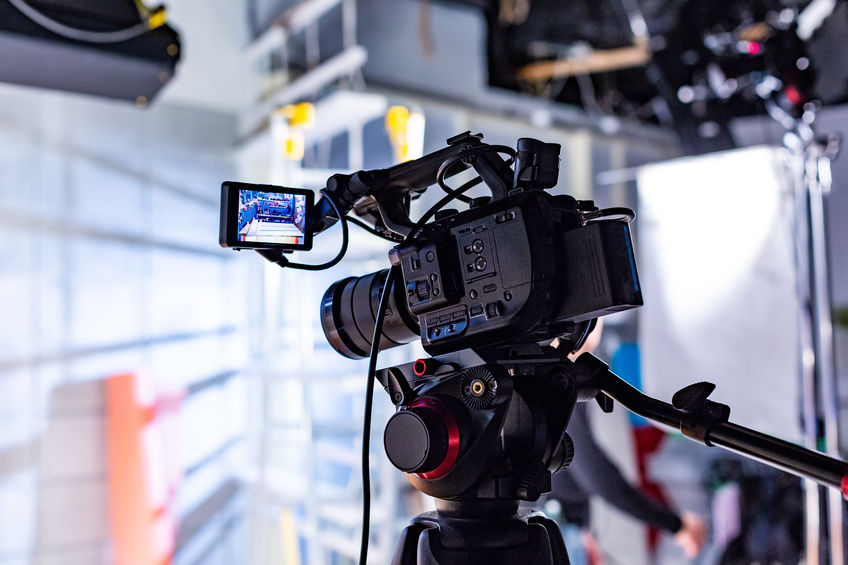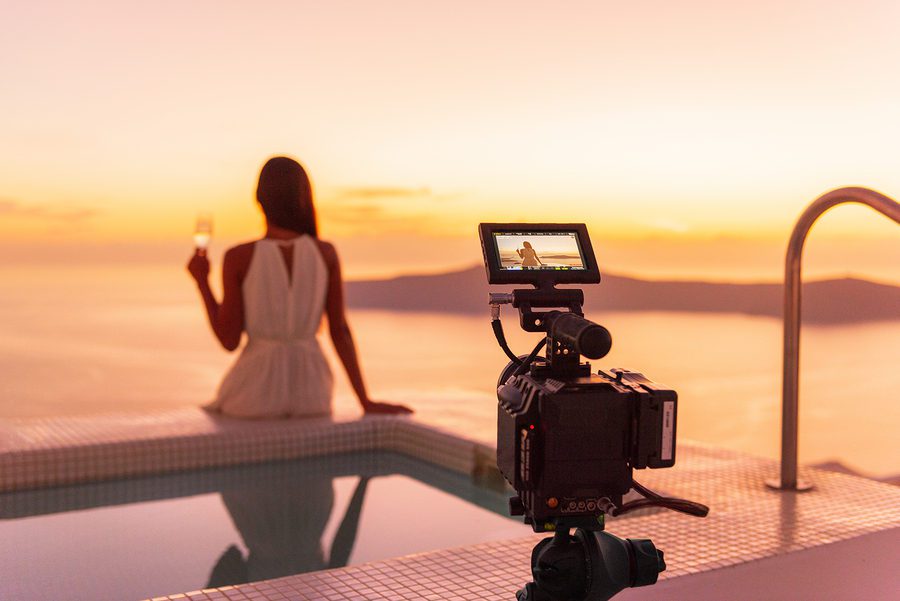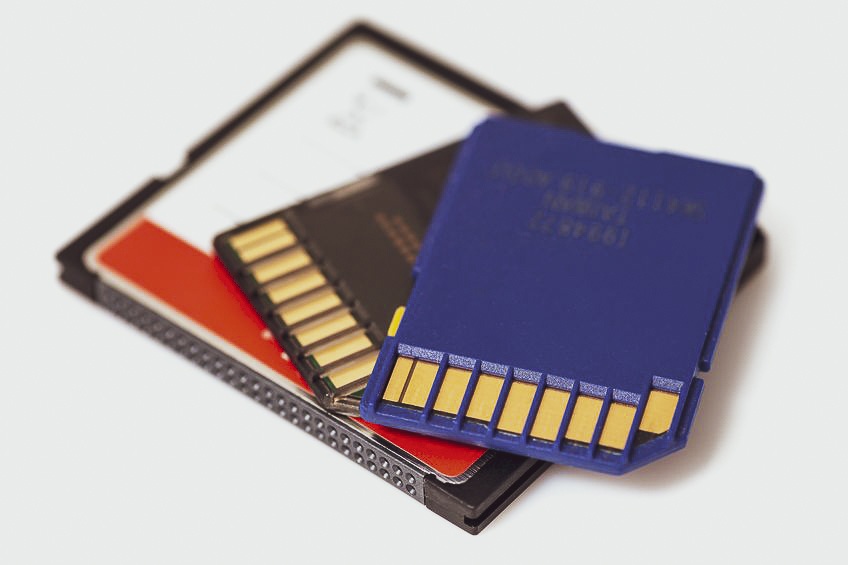DISCLOSURE: AS AN AMAZON ASSOCIATE I EARN FROM QUALIFYING PURCHASES. READ THE FULL DISCLOSURE FOR MORE INFO. ALL AFFILIATE LINKS ARE MARKED #ad
Whether you are an indie filmmaker, YouTube vlogger, wedding videographer, or someone who needs to record your next vacation with your family, you will need an excellent camera to suit your needs.
And if you are in the market for a new video camera, you’ve probably discovered many options.
One of the most important decisions you’ll have to make is buying a camcorder, a DSLR, or a mirrorless camera.
But which is better for your needs – a camcorder or a digital camera like a DSLR?
The short answer is that camcorders are easier for filming long stretches at a time, have smooth zooms, and offer stronger audio options. DSLR and mirrorless cameras ultimately offer better photography possibilities, flexibility, and upgradability through features like interchangeable lenses.
In this article, we’ll take a closer look at the pros and cons of each type and talk about how they each perform in different scenarios like indie filmmaking, vlogging, weddings, and much more.
What is a Camcorder?

An electronic tube that extends comfortably just beyond the edges of your palm, a camcorder is a popular video-recording device, usually featuring an internal long zoom lens.
When camcorders were first invented, they were bulky objects, nearly the size of television broadcast cameras, and recorded to VHS tape.
Since then, they have gone through various iterations, recording to DV tape, Mini DV, mini DVDs, flash memory, and internal hard drives.
Before the introduction of decent video options on smartphones, camcorders were how families could record their consumer-grade video memories of vacations, piano recitals, and weddings.
One major advantage of camcorders is their size; compact and travel-friendly, they are made with the general consumer in mind.
Does Anyone Still use Camcorders – or are they Obsolete?
While camcorders have become far less possible since integrating better cameras and video capability into smartphones, their target audience might have narrowed to a certain degree – they are far from obsolete.
For the average consumer, the video capabilities of their smartphone beat out the size and convenience formerly afforded by camcorders.
Camcorders still offer more power and versatility in a compact package for anyone planning to use their footage in a project instead of as a mere keepsake or Instagram post.
I recommend camcorders that can record 4K footage as the most versatile choice.
A short note on Camcorders vs Action Cameras
While action cameras and camcorders are meant for point-and-shoot video, there are some major differences.
So, how does something like a GoPro size up in this competition?
GoPro footage is generally comparable to cell phone video. Both are meant to run and gun and produce the best results from a pocket-sized device.
GoPros are smaller and more durable, especially once you put them in a weatherproof case.
What is a DSLR/mirrorless camera?

DSLR stands for Digital Single-Lens Reflex.
Before digital cameras became a viable option for photography, SLR cameras were a standard entry point, which could be upgraded by changing to a more powerful lens.
SLR stands for Single-Lens Reflex, and both it and its digital counterpart rely on an internal mirror (the “reflex”) to deliver the image from the lens into the sensor and viewfinder.
Mirrorless cameras have an acronym of their own: MILC, which stands for Mirrorless Interchangeable-Lens Camera.
As the name suggests, MILCs do not have an internal mirror reflecting the viewfinder’s light. Instead, the digital viewfinder presents the same image seen by the sensor.
Because they do not have to accommodate the space needed for an internal mirror, MILCs tend to have smaller and lighter bodies and lenses.
Today, mirrorless cameras have become the de facto standard for most photographers and the successor to DSLRs.
However, there are still photographers who swear by DSLRs. Because mirrorless cameras are getting all the spotlight, you can get some amazing used deals on older top-of-the-line DSLRs from manufacturers such as Canon and Nikon.
What is the Difference Between a Camcorder and a Cinema Camera?

Cinema cameras essentially function as heavy-duty camcorders yet feature interchangeable lenses.
Some examples of cameras in the higher prosumer range of cinema cameras are the Blackmagic Ursa Mini, Sony FX6, and RED Komodo.
As the name suggests, these are cameras designed for use as cinematic filmmaking cameras.
A cinema camera like the Blackmagic Ursa would not qualify as a camcorder because it features an interchangeable lens (and is not exactly travel-friendly).
IBIS stands for In-body Image Stabilization.
OIS stands for Optical Image Stabilization.
While IBIS happens ‘in-body,’ in the actual sensor, OIS happens inside a lens.
Cinema cameras do not have a stabilized sensor – nor stabilized lenses – but camcorders often do.
You can read more about the many different types of image stabilization here.
Camcorders are Great for Run and Gun Situations
Then there is ‘run and gun’ shooting, any situation that requires the guerilla-style ability to get in, get your shots and get out.
In run-and-gun scenarios, cinema cameras like URSA and REDs are not meant (and would be impossible to use). They require time to set up properly and are primarily designed for studio work with controlled lighting.
However, Sony FS5/FS7s prove an exception to this rule and can easily be used as run and gun cameras.
With in-built image stabilization, camcorders are fully intended for run and gun. Cinema cameras generally are not.
The Sony FS and FX series are somewhat unique in this regard, as they are cinema cameras intended for documentary-style shooting – they are similar to ENG cameras in this respect.
A short note on ENG Cameras
ENG stands for Electronic News-gathering. ENG cameras are portable cameras somewhere between camcorders and cinema cameras.
ENG cameras are designed to record high-quality in a compact and stable package, though not intended for creating artful images – they are meant for capturing documentary footage.
What is the Difference Between a Camcorder and a DSLR or Mirrorless Camera?

The basic difference between a camcorder and a DSLR or mirrorless camera has to do with how much the user can customize when it comes to the camera.
Camcorders are far less flexible and customizable, with the most significant difference being lenses.
While DSLR and mirrorless cameras revolve around removable and changeable lenses, camcorders usually feature a single, unchangeable lens, typically with a long focal length variability and smooth zoom function.
Unfortunately, DSLRs do not include in-built ports like XLR for sound or SDI ports for sending output to other systems (Video Village, for instance) and require more gear and setup time for these add-ons.
Another major difference affecting DSLR and mirrorless cameras in Europe is that some models are limited to recording only up to 30 minutes at a time to not legally qualify as camcorders and, therefore, be assigned a different tax bracket.
Camcorders typically produce far lower-quality still photos than DSLRs (if they produce stills). DSLR and mirrorless cameras have much larger sensors than camcorders at a similar price point. These larger sensors are primarily intended for photography.
Larger sensors offer the possibility to take in more light and, therefore, offer a shallower depth of field and images of greater detail and at higher resolutions.
What are the Benefits of Using a DSLR vs Using a Camcorder?

While camcorders are reliable and easy to use, with a gentler learning curve, DSLRs offer greater color depth and visual versatility for those willing to put in the time and effort to learn how to push their gear for stronger results.
Ergonomically, DSLRs also win out, as they are shaped to be held comfortably for long periods on the right side grip. Camcorders can be comfortable but do not conform to natural hand shapes quite as comfortably.
When it comes to extras like audio and filters, though, camcorders have the upper hand to a certain extent, as some models in the price range of a DSLR will offer direct XLR inputs for microphones or other handy preamps, as opposed to the necessity for external recorders with a DSLR.
Camcorders can be major time savers, and time is as important to a filmmaker as it is to a client.
Rigging a mirrorless camera with gear like an external shotgun microphone, an external monitor, extra batteries, a cage, and external NDs can require much prep time.
A camcorder on automatic settings can record seconds after it is turned on.
Also, the convenience of skipping the sound synchronizing step in post-production can save a lot of time in some cases.
Camcorders also often come with built-in ND (neutral density) filters, whereas DSLRs need external filters added for sunny shoot days.
This can be extremely convenient in the case of camcorders, though adding an external filter to your DSLR is hardly a hassle, especially if you invest in a variable ND filter, which you can rotate to achieve different degrees of filtration.
If you want to learn more about variable ND filters, you should read our Guide: Best variable ND filters for video.
Closing the Gap Between Camcorders and DSLRs
Over the past few years, the gap between camcorders and mirrorless cameras has been slowly closing as manufacturers continue adding previously superior features (or only available) in camcorder equivalents.
What used to be cameras aimed primarily at the photography market have developed into compact hybrid monsters with powerful video capabilities.
What Storage Media (Memory Cards) do a DSLR and a Camcorder use?

There are myriad storage media, which range across different types and models: internal SD cards, CFast, external SSDs (Solid-State Drives), and depending on the type of camcorder or DSLR, you will be faced with different possibilities.
The most common storage means in DSLR cameras are SD cards, though CFs are better for higher-quality recording than most Canon models.
It is important to know what kind of storage you will be using, as well as research whether an external recorder might give you a bump in recording speeds or quality.
Even if you know SD cards are your best option, pay attention to the recording speed! Different models of the same card type will offer different recording speed bitrates.
If you plan to buy one of each type of camera, it is a good idea to buy cameras that share the same memory card.
To learn more about memory cards and storage capabilities, read our Ultimate Guide To Memory Cards And SSDs For Video Recording.
When Should You Use a Camcorder?

In my experience, camcorders served as an essential stepping stone from filmmaking as a hobby to using DSLR cameras for professional purposes.
However, they can still serve as indispensable tools in recording events, as a B-roll camera, etc.
Typically, camcorders have an advantage in terms of storage capabilities, filming for extended time, or just ‘capturing the moment.’
Camcorders are a great tool for documenting events in longer and unbroken takes. Weddings, sports, lectures, workshops, and long interviews are all events where a camcorder is probably a safer choice.
Some broadcast video cameras do not include traditional storage capabilities for live-streamed events. Instead, they transfer the information as it is being filmed to a separate control panel for streaming and storage.
Camcorders add the benefit of being able to record while streaming. So if you’re shooting an event or conference, an SDI port on a camcorder allows you to stream and record simultaneously.
This is an advantage over recording and uploading after the fact for streaming, which is often the way to go if you use a DSLR or mirrorless camera.
Camcorders excel at filming wide shots of large events for extended periods.
In the case of a wedding, you might want to have a camcorder and mirrorless on hand, so you can combine the best of both worlds by capturing lengthy sequences on the camcorder and weaving in more artful footage shot on the DSLR.
Also, since weddings and events often have periods with only little light available, the ability to change to a fast lens with a large aperture on a DSLR or mirrorless cam is a must.
Check out the FilmDaft guide to wedding videography.
And let’s not forget about wireless capabilities! Many cameras (camcorders, DSLRs, and mirrorless) now offer apps that can control the camera directly or live-stream straight through the app.
When should you use a DSLR/MILC?

Any time you want to create more carefully composed shots where you control the focus and depth of field, a DSLR is the best choice.
Using lenses with a large aperture allows you to achieve a shallow depth of field, a key component of what is generally accepted as the cinematic look (at least in the commercial space of TV ads). This ability is rarely available on a camcorder.
Choosing your own ISO, white balance, and f-stop is a handy click (or wheel-turn) away on a DSLR.
Having quick and manual control of the different elements manipulating light while filming means being able to forge the image you want to see from the light you have to work with.
Are mirrorless hybrid cameras good for Filmmaking?
DSLRs are excellent for filmmaking, especially on a tight budget.
Many mirrorless cameras like the Lumix GH5S and the Sony FX3 are used in big Hollywood productions – for scenes like car crashes or B-rolls where their compact size is useful for squeezing into cramped spaces.
Worth considering is how much more powerful a DSLR can become when affixed with proper cine-lens. While renting such lenses can quickly break the bank, they more than pull their weight.
This is a category where DSLRs truly shine in what they can offer in independent filmmaking. Slap a cine-lens on your average DSLR with some gear for external focus pulling, and you have a powerful image-making tool that most camcorders cannot begin to compare to.
When it comes to stabilization, keep in mind that most DSLRs require a gimbal or Steadicam/Glidecam to achieve smooth motion.
To learn more about glidecams and get some good recommendations, check out our article 5 Best Glidecams For Mirrorless and DSLR Cameras.
On the other hand, Camcorders have largely had in-built stabilization as a standard feature for some time.
Newer mirrorless cameras competing with camcorders have started to feature smoother stabilization than ever, though.
Are Camcorders good for Photography?
The short answer is no!
While camcorders have evolved to frequently feature an option to ‘photograph’ a still during recording, it is usually just that, a still from a video.
As such, it is stuck at the resolution of the camera’s video limitations, that is, 1920 x 1080 in high definition or 4096 x 2160 in 4K.
DSLRs are primarily intended for photography use and take photographs at a higher resolution than their video recording can.
So, if you go the route of the DSLR, as a bonus, you can learn about photography along the way, which is highly relevant to capturing quality video.
Are mirrorless cameras and camcorders good for YouTube?

Both mirrorless hybrid cameras and camcorders can be effective tools for making YouTube videos or vlogging, depending on what you plan to film and how you want it to look.
And no matter which type of camera you choose, it won’t be the only gear you will need.
It’s easy enough to get started, though; grab a camera and start recording.
You can even use a mirrorless camera for streaming.
Consider what kind of content you plan to produce and start from there; do you plan to travel frequently with your camera?
Maybe size is an important consideration. Do you need strong stabilization or plan to shoot on a tripod mostly?
If you’re an aspiring YouTuber or vlogger, read our Ultimate Guide To The Tools And Equipment Youtubers Use.
Are DSLRs or Camcorders Better for Audio?

Audio is one of the most important factors when choosing a camera. After all, audio is half of the experience of watching a video.
However, native audio quality in a camera – be it a DSLR or a camcorder – is generally subpar and requires an external microphone to make it usable for semi-professional projects.
While simple 3.5mm microphone input jacks have become commonplace in most DSLRs and camcorders, they are not generally offered as a feature for cameras on the lower end of the spending spectrum.
If your budget is tight, do not aim so low price-wise as to prevent yourself from upgrading the camera later – be sure that the camera you want does have a microphone input if it doesn’t, move one rung up the price ladder and look at the next equivalent camera to see if that one does.
Professional sound quality requires XLR cables.
If you are already serious about recording audio and have professional microphones just waiting for a camera to be paired, consider how you will want to connect them to your future camera.
This is less of a concern if you plan to use an external audio recorder anyway. But if you want to be able to run your heavy-duty phantom power microphone directly into your camera for synchronized sound, consider how.
With a DSLR, this likely means purchasing an extra preamp box that allows for XLR microphone inputs and connects to the camera.
Remember that this will effectively increase your final costs for the camera purchase. If you decide on a camcorder, some heftier models will allow direct XLR inputs straight out of the box.
Others will allow for the possibility but require the additional purchase of equipment like a handle grip with 2 XLR inputs.
While this will add to the final cost, it will not likely cost as much as a pre-amp box. But audio technicians agree; if you have the time and money to record your audio separately with an external audio recorder, you should.
Zoom and Tascam have established a strong reputation for reliable products in that department.
Conclusion
To sum up, mirrorless cameras are a far better tool for photography (compared to camcorders), and they are versatile tools for filmmaking as well (although they can sometimes be a hassle to rig).
Camcorders are ideal for quick documentation for a vacation, sporting event, wedding, or concert.
Both are great for simple and relatively undemanding tasks like making videos for YouTube.
And while camcorders are more useful for slow and steady zooms or direct audio inputs, remember that DSLRs offer more room for the camera to grow with you as you hone your technique: you can add external audio ports and monitors, upgrade your lenses, add external focus pulling or zoom mechanisms… the possibilities are nearly endless.
A DSLR-style camera can theoretically support your image-crafting habits up to feature filmmaking with proper cine lenses.
Camcorders will hold you back if you hope to hone your video craft over time. But they still dominate as the ultimate in run and gun documentation. Camcorders are ready to go anytime, anywhere.
So now that you know all you need, get out there and choose the right camera.

